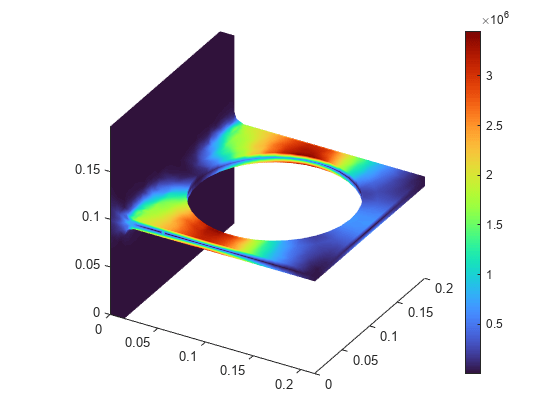Deflection Analysis of Bracket
This example shows how to analyze a 3-D mechanical part under an applied load using finite element analysis (FEA) and determine the maximal deflection.
Create Structural Analysis Model
The first step in solving a linear elasticity problem is to create a structural analysis model. This is a container that holds the geometry, structural material properties, damping parameters, body loads, boundary loads, boundary constraints, superelement interfaces, initial displacement and velocity, and mesh.
model = createpde('structural','static-solid');
Import Geometry
Import an STL file of a simple bracket model using theimportGeometryfunction. This function reconstructs the faces, edges and vertices of the model. It can merge some faces and edges, so the numbers can differ from those of the parent CAD model.
importGeometry(model,'BracketWithHole.stl');
Plot the geometry, displaying face labels.
figure pdegplot(model,'FaceLabels','on') view(30,30); title('Bracket with Face Labels')
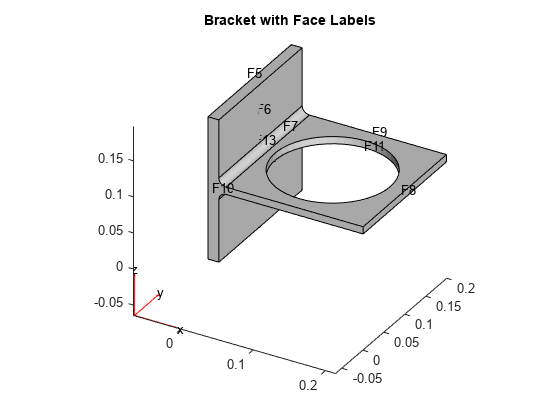
figure pdegplot(model,'FaceLabels','on') view(-134,-32) title('Bracket with Face Labels, Rear View')
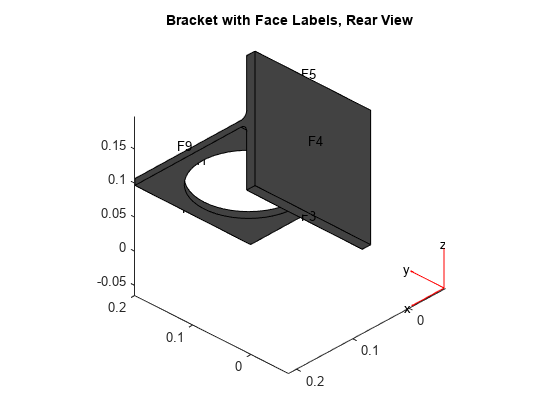
Specify Structural Properties of Material
Specify Young's modulus and Poisson's ratio of the material.
structuralProperties(model,'YoungsModulus',200e9,...'PoissonsRatio',0.3);
Apply Boundary Conditions and Loads
The problem has two boundary conditions: the back face (face 4) is fixed, and the front face has an applied load. All other boundary conditions, by default, are free boundaries.
structuralBC(model,'Face',4,'Constraint','fixed');
Apply a distributed load in the negative -direction to the front face (face 8).
structuralBoundaryLoad (model,'Face',8,'SurfaceTraction',[0;0;-1e4]);
Generate Mesh
Generate and plot a mesh.
generateMesh(model); figure pdeplot3D(model) title('Mesh with Quadratic Tetrahedral Elements');
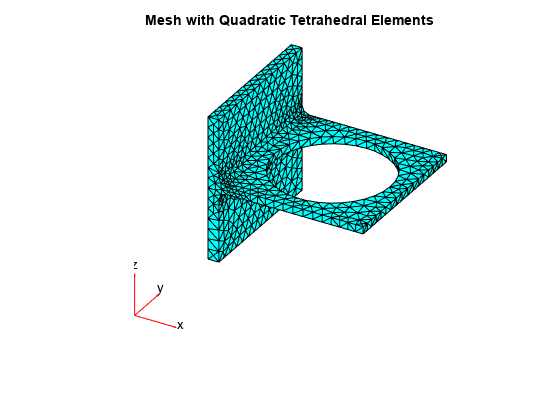
Calculate Solution
Use thesolvefunction to calculate the solution.
result = solve(model)
result = StaticStructuralResults with properties: Displacement: [1x1 FEStruct] Strain: [1x1 FEStruct] Stress: [1x1 FEStruct] VonMisesStress: [5993x1 double] Mesh: [1x1 FEMesh]
Examine Solution
Find the maximal deflection of the bracket in the -direction.
minUz = min(result.Displacement.uz); fprintf('Maximal deflection in the z-direction is %g meters.', minUz)
Maximal deflection in the z-direction is -4.43075e-05 meters.
Plot Displacement Components
Plot the components of the solution vector. The maximal deflections are in the -direction. Because the part and the loading are symmetric, the -displacement and -displacement are symmetric, and the -displacement is antisymmetric with respect to the center line.
在这里,策划程序uses the'jet'colormap, which has blue as the color representing the lowest value and red representing the highest value. The bracket loading causes face 8 to dip down, so the maximum
-displacement appears blue.
figure pdeplot3D(model,'ColorMapData',result.Displacement.ux) title('x-displacement') colormap('jet')

figure pdeplot3D(model,'ColorMapData',result.Displacement.uy) title('y-displacement') colormap('jet')

figure pdeplot3D(model,'ColorMapData',result.Displacement.uz) title('z-displacement') colormap('jet')
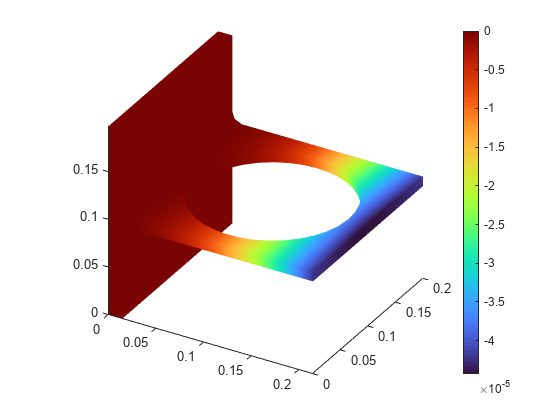
Plot von Mises Stress
Plot values of the von Mises stress at nodal locations. Use the samejetcolormap.
figure pdeplot3D(model,'ColorMapData',result.VonMisesStress) title('von Mises stress') colormap('jet')
